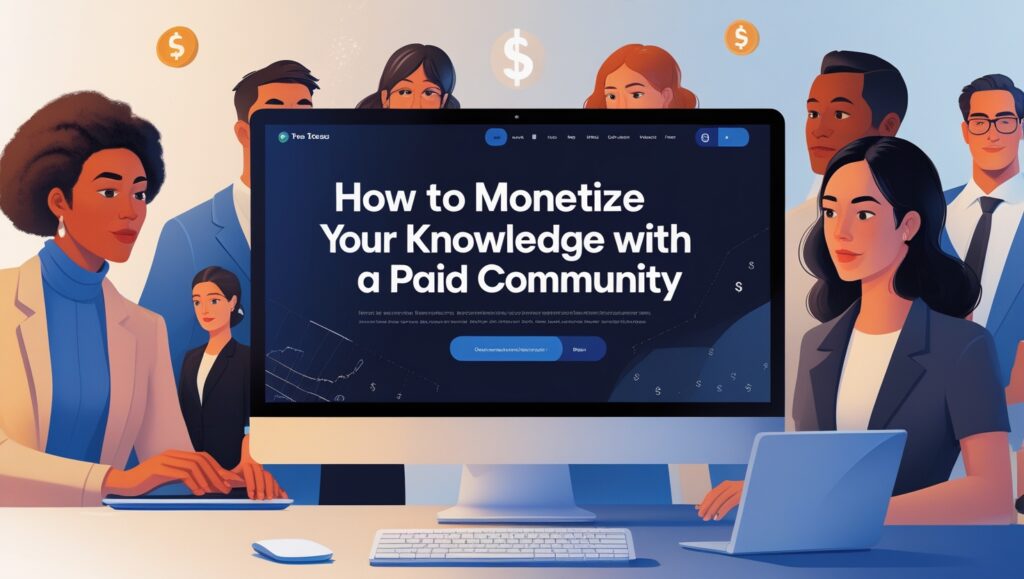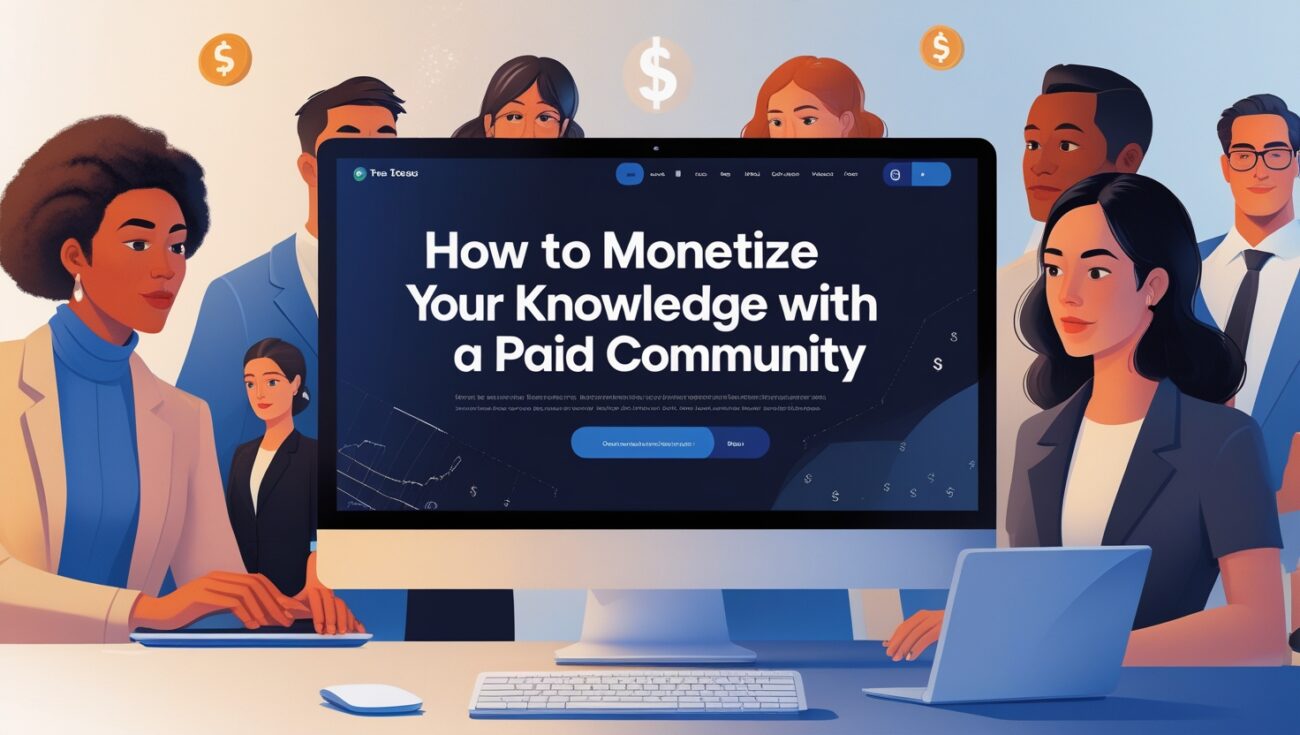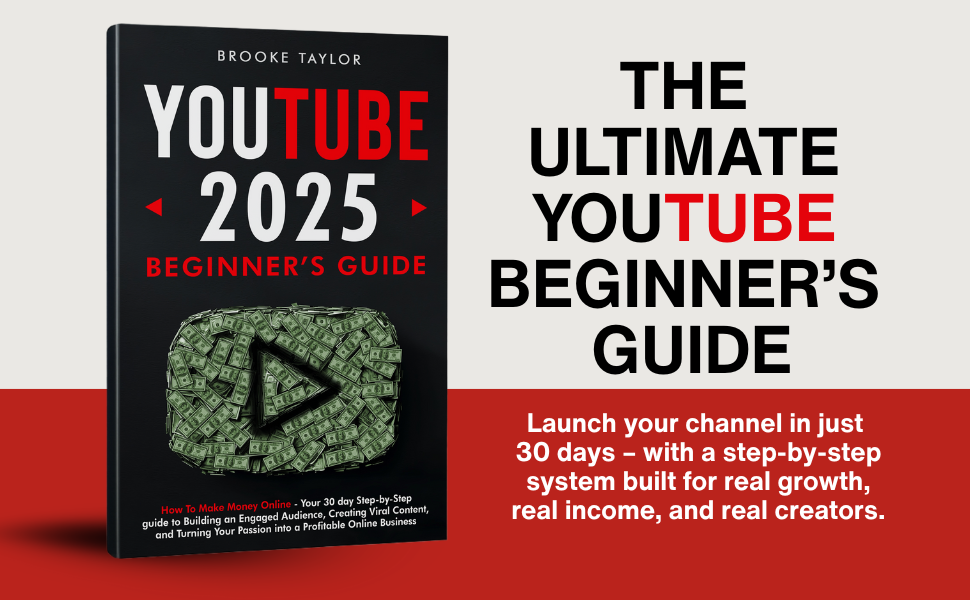How to Monetize Your Knowledge with a Paid Community
When I first started creating content, I gave away everything for free. I didn’t mind because I wanted to help people, but I quickly realized that I was burning out. People loved my tips, but I wasn’t building a sustainable business.
The solution? I learned how to monetize my knowledge by creating a paid community, and it completely transformed my life. Now, I generate predictable monthly income by teaching what I know — and my members get more results because they’re invested.
Here’s exactly how you can do the same.

Table of Contents
Why a Paid Community Works
A paid community allows you to build a space where people pay for access to your expertise, resources, and network. Instead of relying on one-off sales, you create recurring revenue because members subscribe monthly or yearly.
This model works because people aren’t just paying for information — they’re paying for accountability, connection, and transformation. When people join a community, they feel supported and are far more likely to implement what they learn.
Step 1: Choose Your Niche
Before you start building, get clear on who you’re helping and what problem you’re solving.
Ask yourself:
- What specific knowledge do I have that others want?
- Who would benefit most from it?
- What result will my community help members achieve?
The more specific you are, the easier it will be to attract paying members.
Step 2: Pick the Right Platform
I tried Facebook Groups, Slack, and Discord, but none of them gave me the control or professional experience I wanted. That’s why I switched to Skool.
Skool is an all-in-one platform where you can:
- Host your community feed
- Organize your lessons and resources in a classroom
- Schedule events and live calls
- Charge monthly or yearly through Stripe
If you’re serious about building a paid community, sign up for Skool here: click here to create your group now.
Step 3: Decide What’s Included
Your paid community can include things like:
- Step-by-step training videos
- Weekly or monthly group coaching calls
- A private discussion forum
- Templates, checklists, and resources
- Guest expert sessions
You don’t need to offer everything from day one. Start with one or two key features and add more over time as your community grows.
Step 4: Set Your Pricing
Don’t undervalue your knowledge. Even if you’re just starting, you can charge $29–$99/month for your community.
The best part is you only need a small number of members to generate meaningful income. For example, 50 members paying $49/month is nearly $2,500 in recurring revenue.
Step 5: Launch and Invite Members
You don’t need a huge audience to start. I launched my first community with less than 200 followers, and I simply reached out to people who had already shown interest in my content.
Here’s how to launch:
- Announce the community to your audience
- Share the benefits and transformation they’ll get
- Offer a special founding member price for the first 10–20 members
- Make it easy to join by linking directly to your Skool group
Step 6: Keep Members Engaged
The secret to recurring revenue is retention. If members stay subscribed, your income becomes stable and predictable.
Here’s what I do to keep my members engaged:
- Welcome new members personally
- Post weekly updates or prompts
- Celebrate member wins
- Host at least one live call a month
- Add fresh content to the classroom regularly
Skool makes this simple with a leaderboard system that rewards participation and keeps the energy high.
Step 7: Scale Over Time
Once your community is running smoothly, you can add higher-ticket offers like 1:1 coaching, workshops, or premium tiers. Because you already have a loyal group of members, selling additional services is much easier.
You can also increase your price as you add more value. Your community will grow not only in size but also in revenue per member.
What You Should Do Next
If you’re tired of trading time for money or constantly launching new products, a paid community is the answer.
Here’s what to do today:
- Sign up for Skool here
- Create your group name and upload a welcome post
- Add one resource or lesson to get started
- Invite your first five members and build momentum
Once you take this first step, everything gets easier. You’ll finally have a business model that works for you, not the other way around.
Final Thoughts
I wish I had started a paid community sooner. It’s the single best way I’ve found to monetize my knowledge, serve my audience deeply, and build predictable income.
Don’t wait for the “perfect time.” Take action today. Sign up for Skool here and launch your paid community this week. This one decision could change the entire trajectory of your business.
One of the biggest mistakes I made early on was giving away too much for free without a clear way to monetize. Free content can be helpful, but it often attracts people who aren’t ready to invest. When I launched my paid community, I noticed the energy shift immediately. Members showed up, participated, and took action because they had skin in the game.
Another thing I learned was that you don’t need to build the perfect community before you start charging. You just need a space that provides clear value and direction. I launched my first group with a single piece of training and one weekly live call. That was enough to get my first paying members.
If you’re ready to monetize your knowledge, start now by signing up for Skool here: click here to create your group. It’s the same platform I use, and it will save you months of frustration trying to piece together multiple tools.
One of the biggest advantages of using Skool is the built-in Stripe integration. You can start collecting monthly or yearly payments immediately without dealing with complicated tech setups. That means you can launch your paid community faster and start generating income in days, not months.
I also love how Skool helps me keep members engaged. The leaderboard system encourages participation, and the classroom feature makes it easy for members to find resources quickly. This reduces cancellations and makes people feel like they’re part of something valuable.
When you’re first starting, don’t be afraid to offer a founding member price. This rewards early adopters and gives you momentum. I offered my first group at a discounted rate for the first 10 members, and those members became my biggest advocates.
If you’re worried about not having a large audience, remember this: you don’t need thousands of people to succeed. Even 20 members paying $49/month is almost $1,000 in recurring revenue. Once you prove your model, you can scale it up.
Another tip is to collect testimonials early. When your first members get results, ask them to share their stories. These testimonials will make it much easier to attract new members at a higher price point.
One mistake I see a lot of creators make is trying to add too much too soon. Keep your community simple and focused at the beginning. As you grow, you can add guest experts, advanced training, and even premium tiers.
Here’s what I recommend you do today:
- Sign up for Skool here
- Create your group name and add a short welcome post
- Upload one resource or training your audience needs right now
- Invite five people who already follow your work and give them a reason to join
The sooner you get your first members, the sooner you’ll build momentum and recurring revenue.
Don’t wait for the “perfect time” or for everything to be ready. Monetizing your knowledge with a paid community is the fastest way to build a business that’s sustainable, fun, and impactful. Click here to sign up for Skool and start your group this week.






